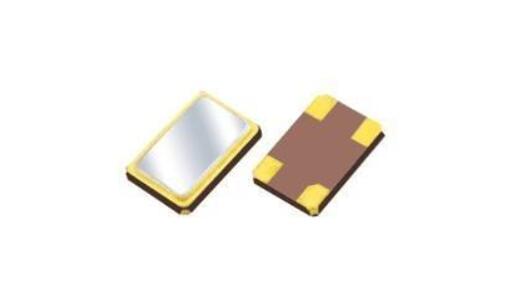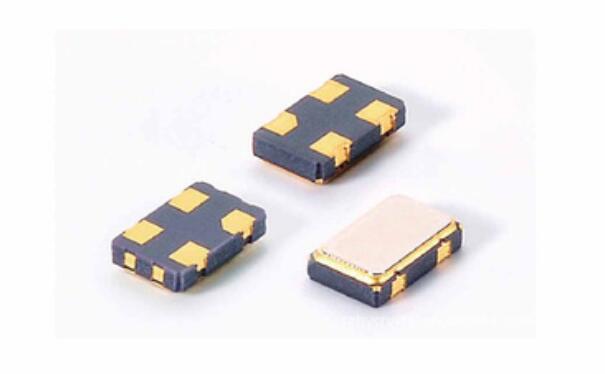Identification and detection of electronic components - crystal oscillator!
Date:2021-05-11 16:41:32 Views:3224
Crystal oscillator is widely used in electronic equipment and intelligent control system. Each single-chip microcomputer system has a crystal oscillator. The whole process is called a crystal oscillator. In the single-chip microcomputer system, the crystal oscillator plays a very important role. It combines the internal circuit of the single-chip microcomputer to generate the necessary clock frequency of the single-chip microcomputer. The execution of all instructions of the single-chip microcomputer is based on this. The higher the clock frequency provided by the crystal oscillator, the faster the running speed of the single-chip microcomputer. Crystal oscillator uses a crystal that can convert electrical energy and mechanical energy into each other to work in a resonant state to provide stable and accurate single frequency oscillation. Under normal operating conditions, the absolute accuracy of ordinary crystal oscillator frequency can reach 50 parts per million. High precision. Some crystal oscillators can also adjust the frequency within a certain range by the applied voltage, which is called voltage controlled oscillator (VCO). The identification symbol of crystal oscillator is x, or Y, Z. The unit is Hertz (Hz). Crystal oscillator is usually used in conjunction with PLL circuit to provide the clock frequency required by the system. If different subsystems need clock signals of different frequencies, they can be provided by different phase-locked loops connected to the same crystal oscillator. The clock source of microcontroller can be divided into two categories: the clock source based on mechanical resonant devices, such as crystal oscillator and ceramic resonant channel; RC (resistance, capacitance) oscillator. One is the pierce oscillator configuration, which is suitable for crystal oscillator and ceramic resonant channel. The other is a simple discrete RC oscillator. The types of crystal oscillators include SMD and dip types, namely patch and pin types.

An important parameter of the crystal oscillator is the load capacitance value. By selecting a parallel capacitance equal to the load capacitance value, the nominal resonant frequency of the crystal oscillator can be obtained.
The general crystal oscillator circuit is connected to the crystal oscillator at both ends of an inverting amplifier (note that the amplifier is not an inverter), and then two capacitors are connected to both ends of the crystal oscillator respectively, and the other end of each capacitor is connected to the ground. The capacity value of the two capacitors in series should be equal to the load capacitance. Please note that the pins of general IC have equivalent input capacitance, which cannot be ignored.
The load capacitance of the general crystal oscillator is 15p or 12.5p. If the equivalent input capacitance of the element pin is considered, the oscillation circuit composed of two 22P capacitors is a better choice.
Crystal oscillators are also divided into passive crystal oscillators and active crystal oscillators. The English name of passive crystal oscillator is different from that of active crystal oscillator (resonance). The passive crystal oscillator is crystal, while the active crystal oscillator is called oscillator. The passive crystal oscillator needs the help of the clock circuit to generate an oscillation signal, which cannot oscillate by itself, so the term "passive crystal oscillator" is not accurate; Active crystal oscillator is a complete resonant oscillator.
The resonant oscillator includes quartz (or its crystal material), crystal resonator, ceramic resonator, LC resonator, etc.
Crystal oscillator and resonant oscillator have their common intersection, active crystal resonant oscillator.

Function of crystal oscillator
The function of crystal oscillator is to provide basic clock signal for the system. Usually, a system shares a crystal oscillator to keep all parts synchronized. The fundamental frequency and RF of some communication systems use different crystal oscillators, which are synchronized by electronically adjusting the frequency.
Detection of crystal oscillator
There are two simple methods to detect the crystal oscillator. The first is the resistance detection method. Adjust the functional gear of the pointer multimeter to rx10k gear to measure the resistance between the two pins of the crystal oscillator, which should be infinite. If the measured resistance value is not infinite or even zero, it indicates that there is leakage or short circuit fault in the crystal oscillator. Another method is the on road pressure measurement method. Take the module of the heat meter in the workshop as an example. Firstly, connect the power supply of the module to the 3.6V battery and let it work. Don't press the button temporarily. Use the digital multimeter to adjust the function to the DC voltage of 20V. The black lead is connected to the negative end and the red lead is connected to the two pins of crystal oscillator respectively. Under normal circumstances, one pin is 0V and the other pin is about 3.6V (power supply voltage). Then press the button on the module, and then measure the two pins of the crystal oscillator with a red probe. Under normal circumstances, the voltage of both pins is about 1.8V (half of the supply voltage). If the measured value is very different from the normal value, the crystal oscillator does not work normally.

Other methods and skills for detecting the quality of crystal oscillator are also sorted out, which are as follows: measure its capacitance with digital capacitance meter (or the capacitance file of digital multimeter), and the capacity of damaged crystal oscillator is significantly reduced (the normal capacity of different crystal oscillators has a certain range); Close to the ear and shake gently. If there is a sound, it must be bad (the internal crystal has been broken, and the frequency has changed if it can be used); Test the output pin voltage. Normally, it is about half of the power supply voltage. Because the output is a sine wave (the peak value is close to the source voltage), it is almost half when tested with a multimeter. Measure with substitution method or oscilloscope. So how to use a multimeter to measure whether the crystal oscillator vibrates? A multimeter can be used to measure whether the voltage of the two pins of the crystal oscillator is half of the working voltage of the chip. For example, if the working voltage is 5V, the measured voltage is about 2.5V. In addition, if you touch the other foot of the crystal with tweezers, the voltage changes obviously, which proves that the vibration is started




 Weixin Service
Weixin Service

 DouYin
DouYin
 KuaiShou
KuaiShou





















